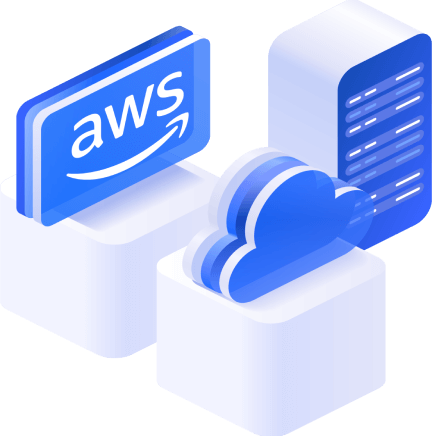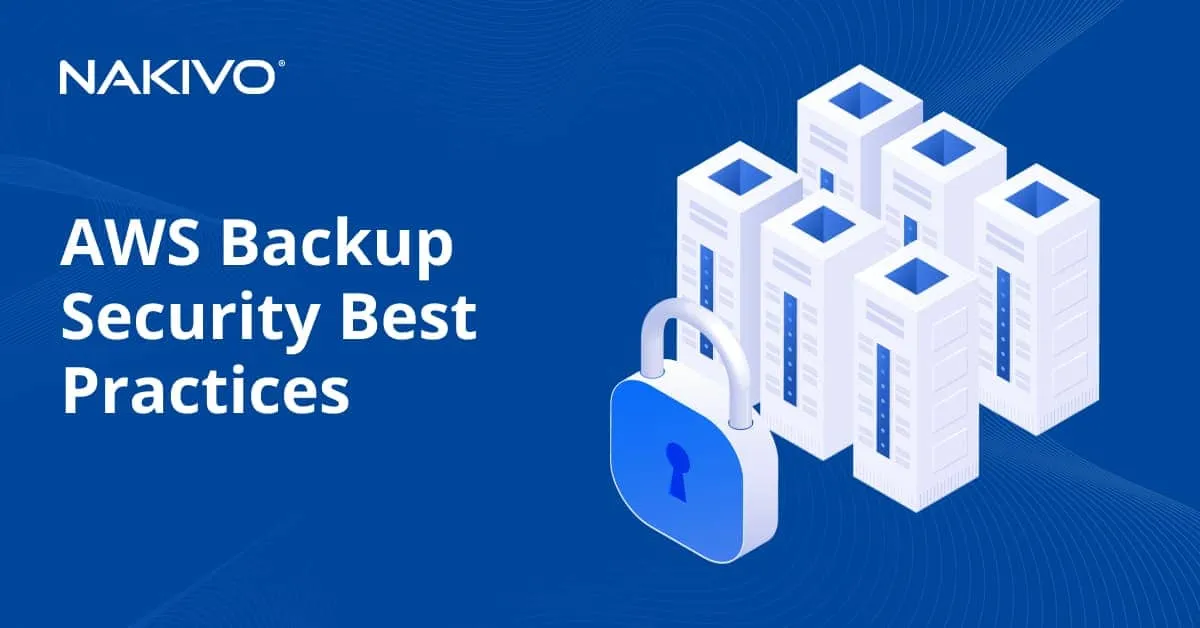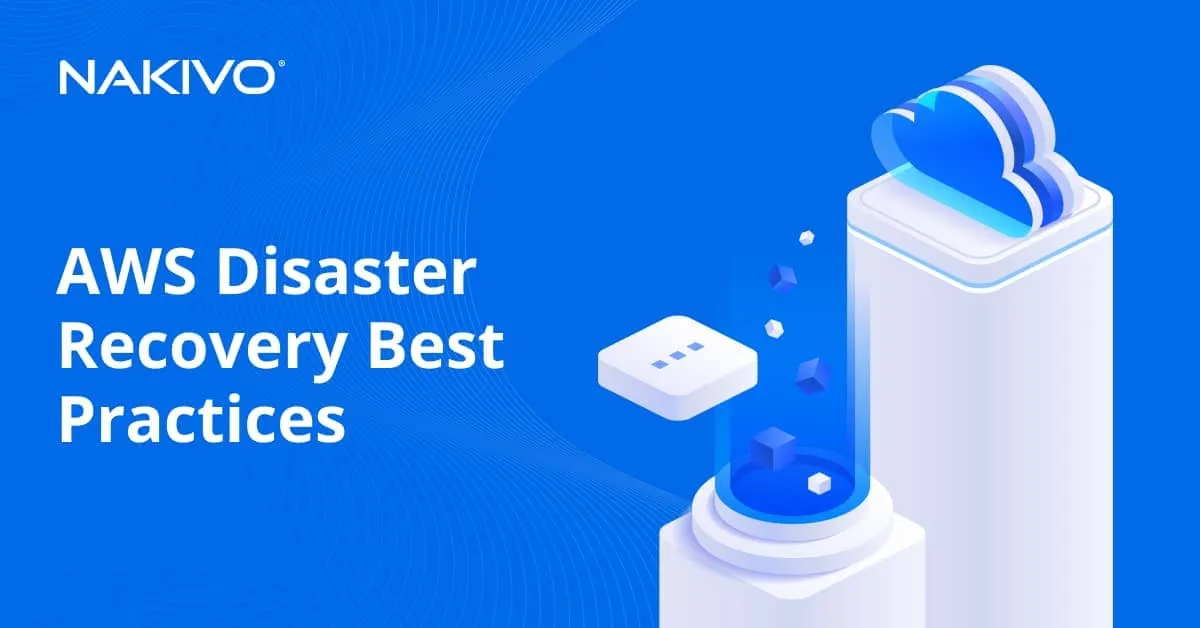Cloud Storage Security Risks for Organizations
Cloud storage and computing platforms are increasingly popular. Many organizations are migrating their data centers or applications to the cloud because of its numerous advantages, including scalability, price, and security.
Despite the benefits of the cloud, these platforms do not automatically guarantee data integrity or eliminate data loss risks due to ransomware, for example. Additional data protection tools are needed to ensure data recoverability and operational resilience.
Even after migrating the infrastructure to a cloud platform like AWS, you should protect your resources in the cloud with backup and replication, and here we will explain why and how.
Why Infrastructure Migration to the Cloud Is Popular
Cloud migration is the process of moving data, applications, and an IT infrastructure from an on-premises data center to cloud-based platforms. The third-party cloud vendors can provide platform as a service (PaaS) or infrastructure as a service (IaaS), among other services. The popularity of infrastructure migration to the cloud stems from the numerous benefits and advantages it offers to businesses, including:
- Scalable and flexible storage and computing solutions, which can accommodate the changing needs of businesses. As data volumes grow, organizations can easily scale up their storage capacity without significant upfront investments in hardware or infrastructure upgrades.
- Reliability and availability through redundant infrastructure and data replication across multiple geographically dispersed data centers. This ensures that data is protected from hardware failures, natural disasters, and other disruptions, providing businesses with improved data resilience.
- Cost efficiency by eliminating the need for businesses to maintain and manage their own physical infrastructure. Instead, they can utilize the infrastructure provided by cloud providers, paying only for the resources they use on a pay-as-you-go basis. This reduces capital expenditure and enables cost optimization.
- Security and compliance by relying heavily on security measures to protect data stored in cloud environments. Cloud providers employ robust security protocols, encryption, access controls, and compliance frameworks to safeguard data from unauthorized access and data breaches. Compliance certifications and audits conducted by third-party entities further validate the security of cloud environments.
What Are the Data Storage Security Risks and Vulnerabilities of Cloud Computing?
While cloud migration offers enhanced data security, it is important to understand that it does not fully protect against data loss. Cloud computing threats include:
- Data breaches happen despite all the robust security measures implemented by vendors because no system is completely immune. Vulnerabilities in applications, misconfigurations, or human error are cloud security risks that can potentially lead to unauthorized access and data breaches.
- Data loss can still occur even though cloud providers implement redundant storage and backup mechanisms. Accidental deletions, software bugs, natural disasters, or infrastructure failures can potentially result in the loss of data. It is crucial for businesses to implement their own data backup and recovery strategies to mitigate such risks and possible cloud storage security issues.
- Insider threats exist despite the strict access controls and security protocols in place in clouds. Malicious employees or individuals with authorized access to the cloud environment may intentionally or unintentionally compromise data security.
- Ransomware and other cybersecurity threats continue to evolve, targeting all types of infrastructures, including cloud environments. This means that despite the security measures implemented for your networks and for your cloud workloads, ransomware can still successfully infect your systems.
- The shared responsibility model is applied by cloud providers, who are responsible for the security of the cloud infrastructure, while the customer is responsible for securing their data and applications within the cloud environment. This means that businesses must implement proper security measures to protect their data, such as encryption, access controls, and security configurations.
- Compliance and legal responsibilities apply even after an infrastructure migration to the cloud. Organizations must ensure that the cloud provider complies with applicable regulations and industry standards. Additionally, they must understand the jurisdiction where their data is stored and consider any legal or regulatory implications.
- Dependency on third-party providers. While vendors strive to deliver reliable and available services, there is always a possibility of service disruptions, outages, or changes in service offerings that may impact data accessibility or availability.
- Software vulnerabilities within the cloud infrastructure or the applications running on it pose a significant risk to data security. If a vulnerability is discovered and exploited by attackers, it can result in unauthorized access to data, data manipulation, or compromise of the entire cloud environment. This is a dangerous cloud vulnerability.
Real-Life Examples of Cloud Computing Security Issues
Without a proper data protection and disaster recovery strategy, unexpected incidents and errors can lead to adverse consequences for data and business, even if the infrastructure and data are in the cloud. Below are a few examples of such incidents:
- Code Spaces (2014). Code Spaces, a code-hosting and collaboration platform, experienced a devastating cyberattack. Hackers gained access to their Amazon Web Services (AWS) management console and deleted most of their data, including customer data and backups. Without a proper backup and replication strategy, Code Spaces was unable to recover the lost data and had to shut down its business.
- GitLab (2017). GitLab, a web-based Git repository manager, suffered a severe data loss incident when an administrator accidentally deleted the primary production database. Without valid backups, the incident resulted in the permanent loss of six hours of customer data, including issues, merge requests, and comments. This incident highlighted the importance of implementing regular backups and verifying the integrity of those backups.
- British Airways (2018). British Airways faced a significant data breach when attackers gained unauthorized access to their systems and harvested customer data, including personal and financial information. While the incident was primarily a result of a cybersecurity attack, it underscored the importance of data protection, including encryption and access controls, as well as the need for robust backup and replication strategies to minimize the repercussions of such breaches.
- T-Mobile (2020) and T-Mobile (2023). T-Mobile, a major telecommunications company, experienced two major incidents since 2020. One of the data breaches affected over a million prepaid customers. The breach exposed sensitive information such as names, addresses, phone numbers, and call records. While this incident was not directly related to data loss, it demonstrated the need for robust security measures, data protection, and incident response plans to mitigate the impact of such breaches.
These real-world examples highlight the potential consequences of data loss incidents and the importance of having a robust backup and recovery replication strategy in place. They demonstrate how businesses can suffer severe financial and reputational damage when data loss occurs without adequate backups.
Mitigate Cloud Security Risks with a Backup and Disaster Recovery Solution
Backup and disaster recovery solutions like NAKIVO Backup & Replication offer several advantages for businesses looking to ensure that their workloads and data in the cloud remain recoverable in different scenarios. These solutions help protect data by delivering a wide range of features:
- Comprehensive data protection. Today’s backup and recovery solutions offer a comprehensive feature set for backup, replication, and disaster recovery. By implementing such a solution, organizations ensure the protection of critical workloads and application data as well as operational resilience.
- Multi-platform support. NAKIVO Backup & Replication can protect Amazon EC2 instances and VMware Cloud Director objects as well as a range of other platforms for hybrid environments, including other virtual environments (for example, VMware vSphere), physical Windows/Linux servers, and Microsoft 365 data.
- Point-in-time recovery. Backups often provide the capability to store multiple versions of data or enable point-in-time recovery. This feature is valuable when dealing with accidental data modifications, data corruption, or the need to restore data to a specific point in time. It allows you to roll back to a known good state and avoid the permanent loss of valuable information.
- Replication for redundancy and high availability. Data protection solutions often include replication capabilities. This enables businesses to create redundant copies, that is virtual machine replicas and cloud instance replicas, in a different location. In case of a primary system failure, the replicated data can be seamlessly activated, and workloads can be restored in a short time, minimizing disruption and ensuring continuous access to business-critical resources.
- Disaster recovery and business continuity. Backup and replication software assists businesses in implementing robust disaster recovery plans by relying on workload replicas. In the event of a catastrophic failure or a significant outage, automated disaster recovery workflows facilitate swift failover to replicas allowing for minimal disruption to business operations. Once the primary facilities are restored, DR solutions allow you to perform failback from replicas to source machines.
- Ransomware attack mitigation. Ransomware attacks are a significant threat to data security in the cloud and on-premises locations. Attackers encrypt data and demand a ransom for its release. Having backups that are regularly updated and stored separately from the primary systems allows you to restore your data without paying the ransom, minimizing the impact of ransomware attacks. Moreover, NAKIVO Backup & Replication allows you to enable immutability for backups to deliver anti-ransomware protection against data encryption and modification.
- Centralized management and monitoring. Modern data protection solutions provide centralized management and monitoring capabilities. This allows businesses to efficiently manage and monitor their backup and replication tasks from a single interface. Administrators can schedule backups, monitor progress, receive alerts, and perform troubleshooting, simplifying the overall backup and recovery management process.
- Compliance and data retention. Many industries and regulations require organizations to retain data for specific periods. A backup and replication strategy for the cloud ensures that you can meet these compliance requirements by securely storing data for the required duration. It helps you avoid penalties or legal consequences that result from non-compliance.
In short, modern backup and disaster recovery solutions like NAKIVO Backup & Replication can ensure that cloud workloads and data are recoverable in different scenarios, helping you minimize downtime and disruptions.





